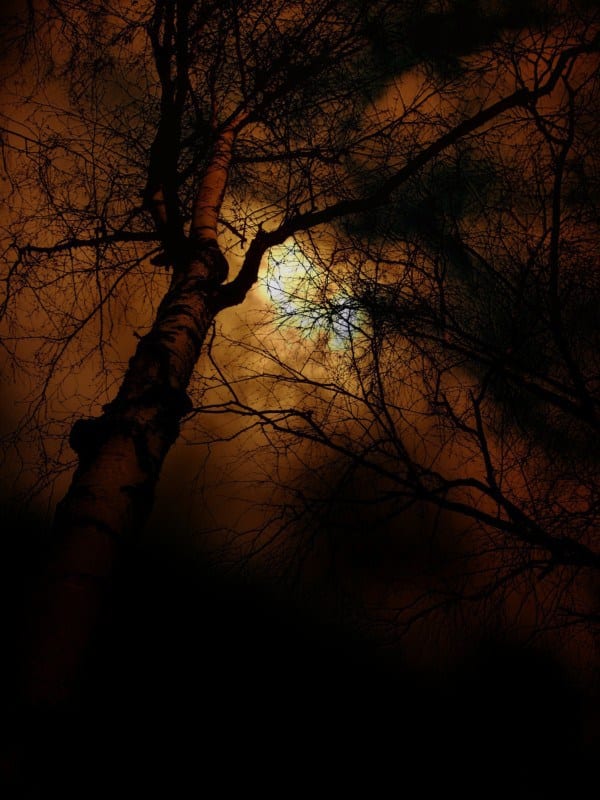This guest post, by storyteller and Creative Writing lecturer Simon Heywood, was originally featured on The Writer’s Cookbook
About four years ago, I really started listening to my wife. Really listening.
Although Shonaleigh had worked for twenty years as as a professional storyteller, she had started something new: new for her, but very old. She started telling her grandmother’s stories.
I never knew Shonaleigh’s grandmother, Edith Marks, but I have heard a lot about her. She was a drut’syla (cf. Yiddish dertseyler), a hereditary female Jewish storyteller. She told and taught her stories in the traditional way—without writing—so by the time Shonaleigh was in her late teens she had already learned several thousand stories, some many centuries old.
Drut’sylas are rare nowadays, but they seem to have been quite common, up until the last century.
The first of her grandmother’s stories that Shonaleigh told was The Ruby Tree. It’s a typical example of the family repertoire, in that it’s not a single story, so much as a cycle of about two dozen tales, which interweave into a kind of saga.

It’s not a fairy tale. It’s a franchise. But unlike a box set, with live storytelling like The Ruby Tree you can’t just hit Play All and sit back with the popcorn.
The tales are never quite told the same way twice: they change according to the mood of the moment and the wishes of the audience on any occasion. If you want to hear the whole thing, you have to hear it told over and over and over.
So that’s what I did. Between January 2014 and December 2016, Shonaleigh told The Ruby Tree on 19 separate occasions, in private homes, at public events, at conferences and festivals. I got to know the story pretty well.
The central plot line concerns a young king and queen who long for a child. The king sets out to pluck a pomegranate from a magical tree whose fruit cures barrenness, planted long ago by the immortal prophet Elijah.
But, of course, there is a catch, in the person of a makhshef, a demonic hag-like entity. The makhshef has been watching the Ruby Tree with jealous eyes.
The tree is too powerful for the makhshef to curse directly; so, instead, she keeps watch, in a magic mirror, for the approach of any hopeful travellers, and then, just as each traveler reaches up to pick a pomegranate, she accosts them with a curse, which turns each unfortunate traveler into sandstone where they stand, while their chosen pomegranate changes into a ruby as it remains hanging on the branch.
The cruel essence of the curse is that the soul of the child that would otherwise have been born remains entombed indefinitely within the ruby on the tree. In this way, over time, half of the tree remains alive and laden with fruit, and half withered branches bearing nothing but the dead and precious stones, holding a multitude of trapped, unborn souls.

Having been established as a miraculous source of life, the Ruby Tree has become a kind of cosmic necropolis. This is a motif of pivotal significance, to which we shall return.
On this occasion, however, the makhshef relents—or at least discerns an opportunity to play cruelly with the dynasty at her leisure. She allows the young king to take a pomegranate for his queen, in return for power over the child that will be born as a result—which, she says, she will exercise once a month, during the night of the full moon.
This fateful bargain made, the king returns with the fruit, and the queen, having eaten it, bears a son, named Barathabas. Learning of the makhshef’s curse, the queen then seeks to protect her child by concealing him in a tower each full moon.
At first, this strategy seems to work, and all seems well. But from the boy’s thirteenth birthday onwards, each full moon, he finds himself traumatically transformed into a terrible eagle-like monster. The queen can do nothing to prevent this, but she carefully hoards one feather from each of her son’s traumatic transformations.
The middle section of the plot recounts how the Eagle-Prince obtains a bride from a neighbouring kingdom. Like many a folktale heroine, the bride, the young princess Hannaleah, now faces the task of disenchanting her new husband. Accordingly she disguises herself as a makhshef and goes to the Ruby Tree, as her father-in-law went before her. She befriends the real makhshef, and dupes her into confiding the secret means to break the curse that hangs over the Eagle-Prince and the eponymous Ruby Tree.
If a single feather from each of the prince’s monthly transformations were to be wrapped up in a bundle, along with various other magical items which Hannaleah has also acquired, then the makhshef herself would be destroyed, and the double curse broken.
Although this task sounds simply impossible—and, in context, involves sacrifices of cosmic proportions—Hannaleah musters the nerve to perform it, with the help of the queen’s long-hoarded feathers.
And the makhshef is destroyed.
The curse is finally lifted from the Ruby Tree. The would-be parents cannot now be returned from stone to their natural state, but the children’s souls are finally and fully embodied, and many lost generations of children enter the world.
It’s a beautiful story, but a bit of background knowledge makes it lovelier. You wouldn’t know it, necessarily, but rubies, stones the colour of blood, are a powerful symbol in Jewish folklore. Stones represents memory, and blood represents life. Another story in the cycle recalls how rubies were created:
…it had been a long day, and the Creator’s hands were sore, and a little bit of blood went into that stone—and there was a blood-red stone! He said: ‘This is a ruby. This will be the soul of your people.’
The whole story is full of symbolism like that: to hear the whole thing is like entering an enchanted labyrinth, which we are only just beginning to explore.